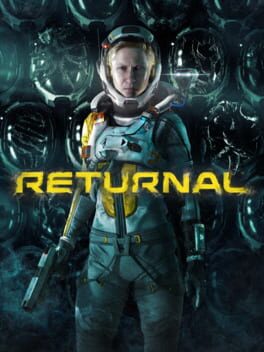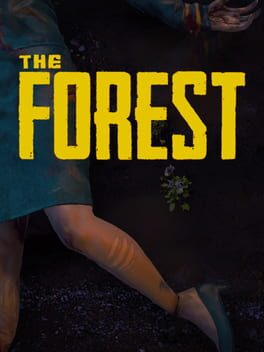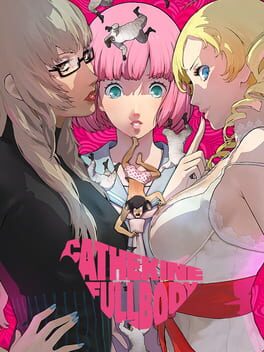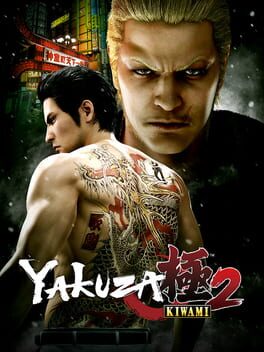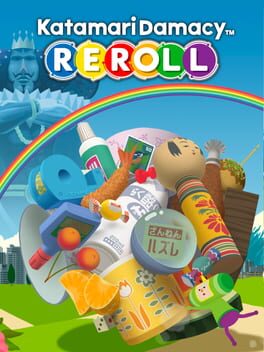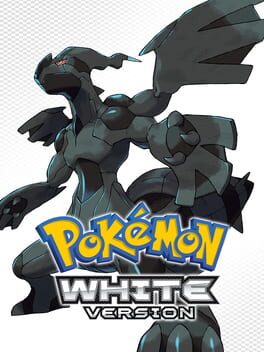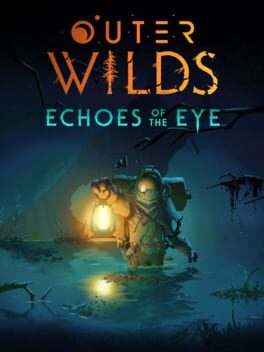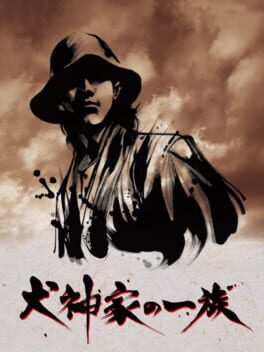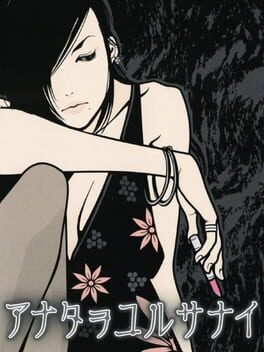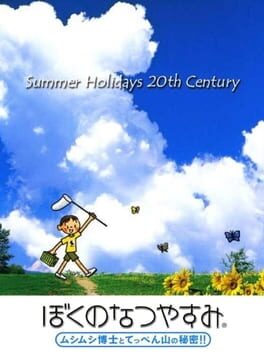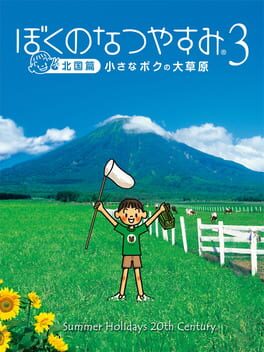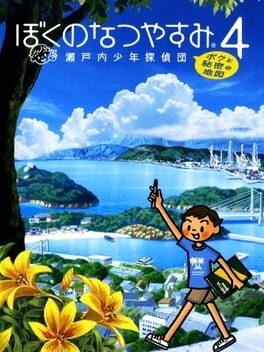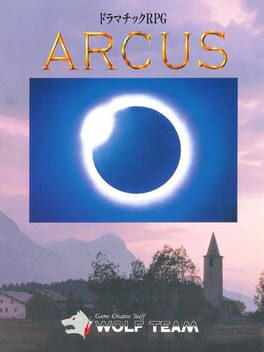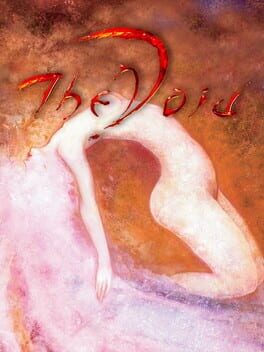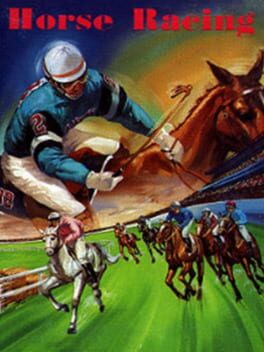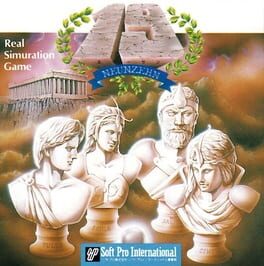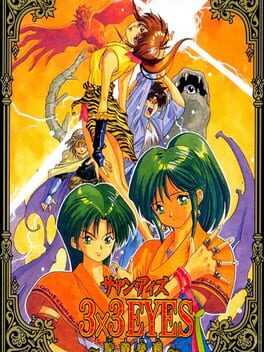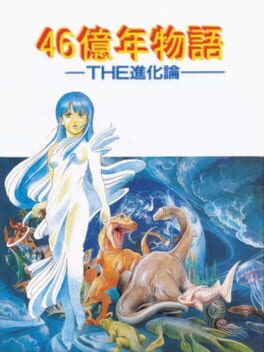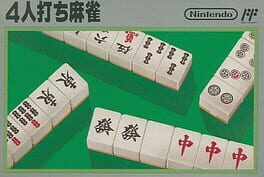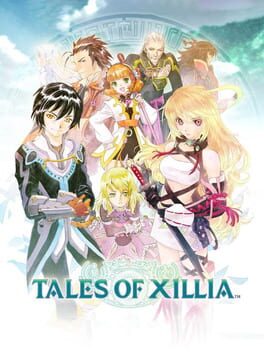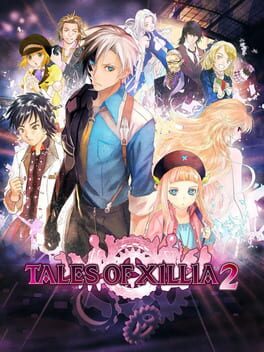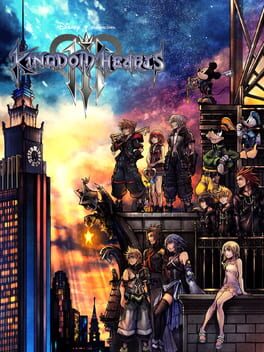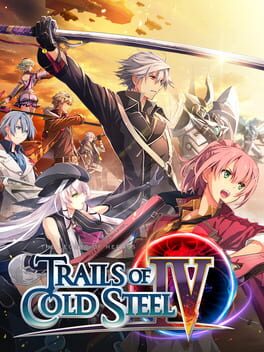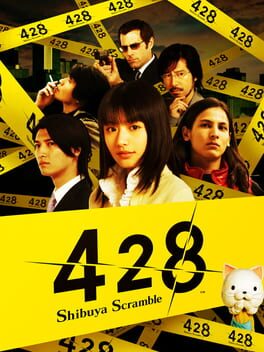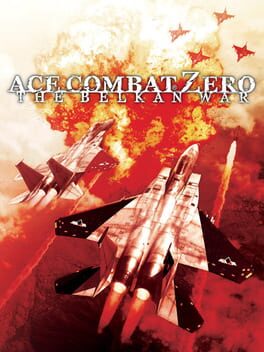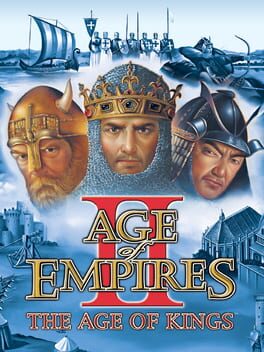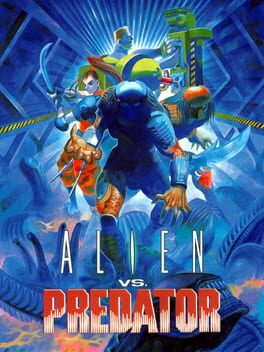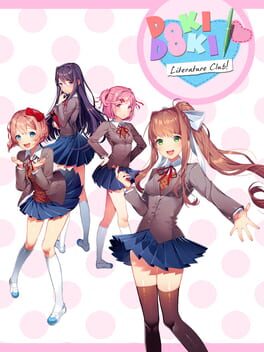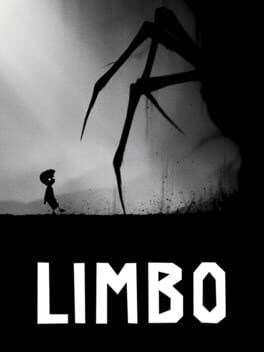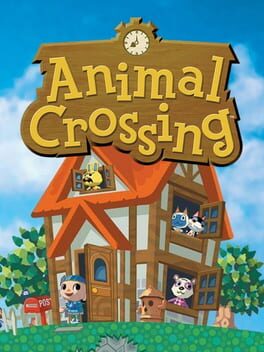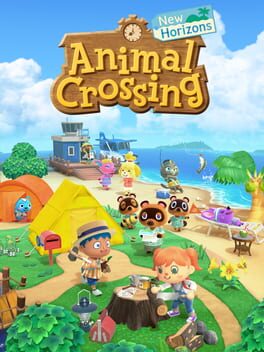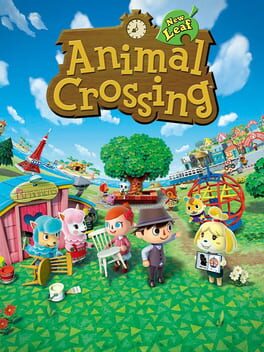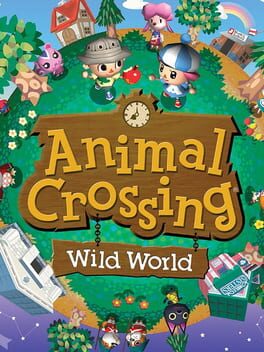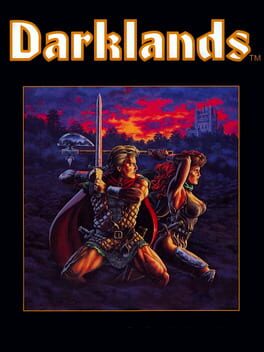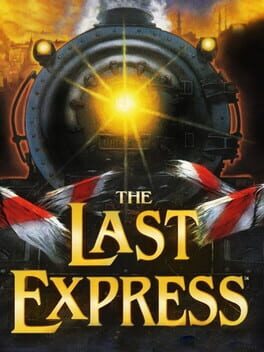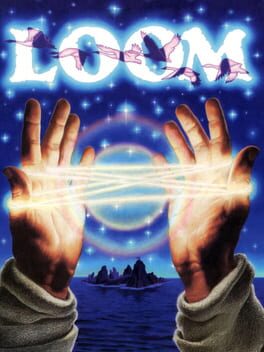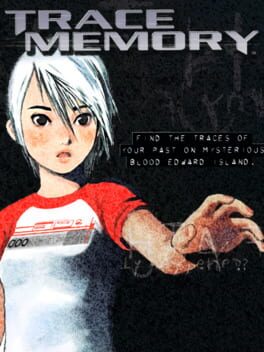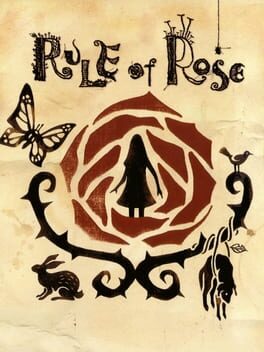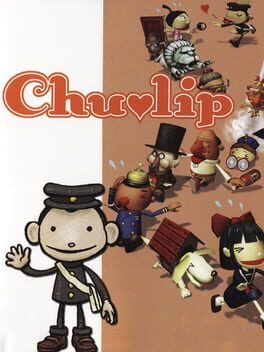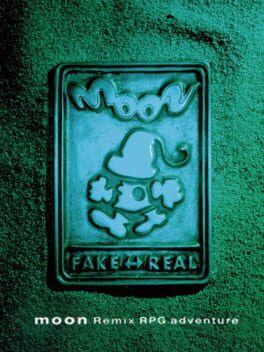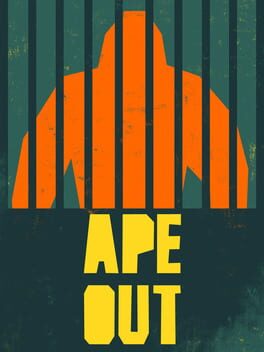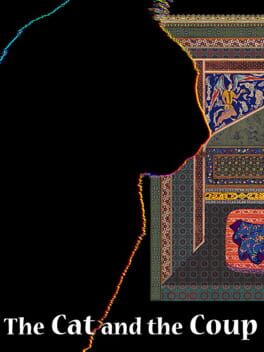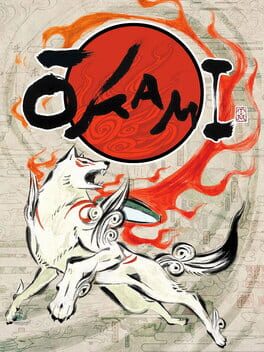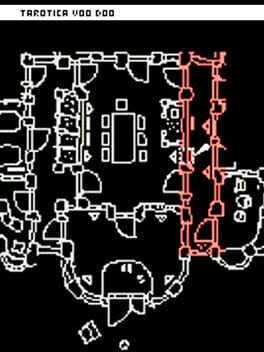Trilbion
104 reviews liked by Trilbion
Alan Wake
2010
When I was a kid, around fall my family would always plan big camping trips up north. After a decade and a half, the exact locales blur, all dirt campsites and sleepy towns, cut by endless drives down quiet backroads. Connecting every single trip, however, is the same singular image: laying in the backseat, staring to the sky as the pine, beech and maple trees ebbed and flowed with the breeze, a shimmer of greens, golds and reds against a still, cloudless ether.
Despite its northwestern setting, Alan Wake is a game that feels like home. Beyond the woodsy vibes, the spirit of the game keeps that same autumnal energy I associate with those countless trips, down to the same Halloween haunts that filled hours of my life. Alan Wake is read through the lens of Steven King and The Twilight Zone, a sort of contemporary / old school horror fusion, and the game makes it's infatuation with these influences blatant, to the point of embarrassment.
Horror molds the story and setting, leaning into a gun-toting Twin Peaks atmosphere, but the mold is not the full experience. Despite billing itself as a horror game, it feels more aligned with being an acknowledgement of horror's influence. In a sense, Alan Wake isn't a horror game; it's a game about horror, where horror itself is light and breezy.
Alan Wake is a beautiful game, a picturesque capturing of the woods and towns I spent much of my childhood in. To imply the game is mechanical deep or systematically unique would be disingenuous, but as a reflection of some of the most calming, perfect moments of my life, it's flawless. I love this game.
Despite its northwestern setting, Alan Wake is a game that feels like home. Beyond the woodsy vibes, the spirit of the game keeps that same autumnal energy I associate with those countless trips, down to the same Halloween haunts that filled hours of my life. Alan Wake is read through the lens of Steven King and The Twilight Zone, a sort of contemporary / old school horror fusion, and the game makes it's infatuation with these influences blatant, to the point of embarrassment.
Horror molds the story and setting, leaning into a gun-toting Twin Peaks atmosphere, but the mold is not the full experience. Despite billing itself as a horror game, it feels more aligned with being an acknowledgement of horror's influence. In a sense, Alan Wake isn't a horror game; it's a game about horror, where horror itself is light and breezy.
Alan Wake is a beautiful game, a picturesque capturing of the woods and towns I spent much of my childhood in. To imply the game is mechanical deep or systematically unique would be disingenuous, but as a reflection of some of the most calming, perfect moments of my life, it's flawless. I love this game.
Returnal
2021
When you are committed to a mental hospital in the USA, you generally have to consent verbally to surrendering your agency, or someone has to do it for you. You have to do this for the hospital to be able to treat you as "legally insane" so they can lock you up in a room and treat you like a prisoner or an enemy or some kind of other thing. Nurses then work hard to ignore you, doctors that see you for five minutes attempt to either belittle you or goad you into some kind of behavior that confirms their suspicions that you are an unstable and suicidal person that is a danger to yourself and to others. They keep you locked up for a week and make you take pills that make you puke and you aren't allowed to sleep when you want to and you have to pace a circular hall shaped like a fucking panopticon with a nurse's desk in the middle. You will never want to die more than right there.
Why do people want to kill themselves? Because they're depressed? Sure. Depression, usually, means that your brain is chemically deprived of serotonin or other hormones responsible for a healthy internal world. It makes things you like feel less meaningful, makes things you're afraid of more scary, makes things you don't want to do into the heaviest weights imaginable. It's easy to look at this and just say, yes, we need antidepressants, we need therapy, we need whatever other number of things to treat this fucked up serotonin vacuum.
So you get therapy and antidepressants and you give them an honest try and you end up in the psych ward anyway. You open your eyes again and it's a frustratingly familiar sterile white fiber board ceiling. A man one room over screams about how he wants to kill his bitch of a wife, how he wants to strangle himself. You will never want to die more than right there.
Why do we never ask what has led people to these states of serotonin drought? Is it because you are just designated "legally insane," that there is some integral piece of you that was made broken that must be rectified by the sparkling techno-brilliance of modern medicine? Is it because you are simply a lazy whiner that has had it too easy and the reason you are falling to pieces is the shattering weight of your own malaise?
Or is it maybe that there's not a solution so simple. Maybe the very fiber of what we've come to understand as living is fucked. Maybe it's the fact that the ambulance ride that took you to the hospital costs you several thousands of dollars. Maybe it's that you couldn't even afford to see the therapist they recommended you in the first place. Maybe it's that you can't hold down a steady job because they demand so much for so little and your hands shake when your manager raises their voice. Maybe it's because when you were young felt some kind of sting on your skin or in your mind and you couldn't even begin to imagine how long that sting would stay. Maybe it feels like you are shouldering the weight of something at all times, and it is invisible. You can't point to anything to say:
"Look now, doctor. Look at my burden. Look what I am coming apart under. Please, help me. Please, I want to be free of this. Lay poppies by my bedside if you must. Please."
What you actually say to the doctor isn't that. You say "sometimes I think about killing myself," and that's all it takes for the shape in the doctor's mind to be something broken, bruised and insane. You are wrong, no matter how much it feels to you like the world has been wrong. All you've wanted to do is explore it, to have some answers. You don't get that. You're stuck here. You can't even kill yourself. They tell you this hell is your own making. You believe them.
Small edit:
I recommend beating this game in a single sitting without stopping. The PC optimization is terrible though, fair warning.
Why do people want to kill themselves? Because they're depressed? Sure. Depression, usually, means that your brain is chemically deprived of serotonin or other hormones responsible for a healthy internal world. It makes things you like feel less meaningful, makes things you're afraid of more scary, makes things you don't want to do into the heaviest weights imaginable. It's easy to look at this and just say, yes, we need antidepressants, we need therapy, we need whatever other number of things to treat this fucked up serotonin vacuum.
So you get therapy and antidepressants and you give them an honest try and you end up in the psych ward anyway. You open your eyes again and it's a frustratingly familiar sterile white fiber board ceiling. A man one room over screams about how he wants to kill his bitch of a wife, how he wants to strangle himself. You will never want to die more than right there.
Why do we never ask what has led people to these states of serotonin drought? Is it because you are just designated "legally insane," that there is some integral piece of you that was made broken that must be rectified by the sparkling techno-brilliance of modern medicine? Is it because you are simply a lazy whiner that has had it too easy and the reason you are falling to pieces is the shattering weight of your own malaise?
Or is it maybe that there's not a solution so simple. Maybe the very fiber of what we've come to understand as living is fucked. Maybe it's the fact that the ambulance ride that took you to the hospital costs you several thousands of dollars. Maybe it's that you couldn't even afford to see the therapist they recommended you in the first place. Maybe it's that you can't hold down a steady job because they demand so much for so little and your hands shake when your manager raises their voice. Maybe it's because when you were young felt some kind of sting on your skin or in your mind and you couldn't even begin to imagine how long that sting would stay. Maybe it feels like you are shouldering the weight of something at all times, and it is invisible. You can't point to anything to say:
"Look now, doctor. Look at my burden. Look what I am coming apart under. Please, help me. Please, I want to be free of this. Lay poppies by my bedside if you must. Please."
What you actually say to the doctor isn't that. You say "sometimes I think about killing myself," and that's all it takes for the shape in the doctor's mind to be something broken, bruised and insane. You are wrong, no matter how much it feels to you like the world has been wrong. All you've wanted to do is explore it, to have some answers. You don't get that. You're stuck here. You can't even kill yourself. They tell you this hell is your own making. You believe them.
Small edit:
I recommend beating this game in a single sitting without stopping. The PC optimization is terrible though, fair warning.
The Forest
2018
for all intents and purposes this game should be complete dog shit ass but shoving a multiplayer mode while altering very little of the single player is a stroke of genius that results in a multiple dads polycule looking for their son while cheesing all the horrible combat by overpowering the enemy thru sheer numbers, jumping off cliffs to certain death, clearing the last cave backwards by sliding off the giant hole in the middle of the map, continuously destroying the base (which you'll spend 5 seconds in) building by naively chopping trees without looking where they'll fall, and afterwards looking at your son's picture in unison. It's an experience that's become a staple in my friends groups
Balatro
2024
https://i.ibb.co/6vLDK1S/Screenshot-2024-02-26-at-12-44-02.png
not morally egregious per se but rather a depressing culmination of two centuries worth of design trickery and (d)evolving cultural/social tastes and otherwise exists as insipid casinocore autoplaying bullshit that leaves you feeling the same way as you did moments after blasting rope to that fucked up mmm ice cream so tasty thing you found in the middle of a reddit doomscroll. this game should come with a contractual agreement binding its devotees to never speak prejudicially about mobile games or musou or vampire survivors or people whose lives have been ruined by industrialised gambling practices. you seen that casinos have RFID wristbands now that let you re-ante by just waving your hand across the slots? goes great with the simulated day/night lighting and complementary alcoholic energy drinks. endless hours of fun! fuck the review man let's talk the end of the world in the comments below
not morally egregious per se but rather a depressing culmination of two centuries worth of design trickery and (d)evolving cultural/social tastes and otherwise exists as insipid casinocore autoplaying bullshit that leaves you feeling the same way as you did moments after blasting rope to that fucked up mmm ice cream so tasty thing you found in the middle of a reddit doomscroll. this game should come with a contractual agreement binding its devotees to never speak prejudicially about mobile games or musou or vampire survivors or people whose lives have been ruined by industrialised gambling practices. you seen that casinos have RFID wristbands now that let you re-ante by just waving your hand across the slots? goes great with the simulated day/night lighting and complementary alcoholic energy drinks. endless hours of fun! fuck the review man let's talk the end of the world in the comments below
Catherine: Full Body
2019
This review contains spoilers
Did You Know?
Catherine: Full Body is actually a completely different game to the original Japanese Catherine as Atlus assumed the game was too difficult for English audiences.
This game is a retooled version of the Japanese Exclusive ドキドキトランスパニック which roughly translates to:
Doki Doki Trans Panic
Follow for more fun gaming facts.
Catherine: Full Body is actually a completely different game to the original Japanese Catherine as Atlus assumed the game was too difficult for English audiences.
This game is a retooled version of the Japanese Exclusive ドキドキトランスパニック which roughly translates to:
Doki Doki Trans Panic
Follow for more fun gaming facts.
Yakuza Kiwami 2
2017
Possibly my least favorite game ever made. Maybe I'm biased because I played the original first which is my second favorite game of all time but nothing about Kiwami 2 works for me. The game uses revamped combat from 6, a combat system I already disliked, and throws it into a lame copy paste of random assets from other RGG games while labelling itself as the definitive Yakuza 2 experience. I guess I can give RGG credit for remaking all of Sotenbori for this game, but to be honest it was obviously just so they could paste it into a future Dragon Engine game with no worries.
The presentation is significantly worse, using the rather flat photorealistic Dragon Engine aesthetic as 6, losing all semblance of atmosphere from the original. Rain, a common weather motif that added to the Neo Noire vibe of the game, simply doesn't exist. Cutscenes are also presented in a worse fashion, with significantly weaker cutscene music to enhance this gloriously shitty remake. The two cutscenes with the added SiM music are already notorious enough but to cut it short- they're terrible. They don't fit the jazzy vibes of the original game and ruin one of my favorite moments in a video game ever.
The soundtrack is abhorrent, only reusing select tunes from the original while also having new music that is extremely forgettable. Not helping this is the fact that the remixes aren't very good either. Phenomenal tracks like Evil Itself and The Grudge arent present either which is super disappointing.
The cut shopping district is another example of Kiwami 2's rampant laziness, and instead just inserts a pointless Majima side story as a substitute. Shinseicho worked because it was a relatively small district that had everything tightly knit together which made discovering the clues very fun. That doesn't exist here.
There's no reason to play this when Yakuza 2 is one of RGG's best games ever. Nothing about this remake is superior to the original, in my opinion anyway. If you prefer this game that's fine but I'm simply tired of hearing that Kiwami 2 is better because it's less dated and blah blah bla-... Shut up!!! The Dragon Engine combat was far more dated than the original when it first came out. The fact that RGG is insistent on saying this is a superior product while refusing to make the original accessible outside of reprints of the PS2 game they did years ago is infuriating. Overall one of the most corporate games I've ever experienced, don't play this.
The presentation is significantly worse, using the rather flat photorealistic Dragon Engine aesthetic as 6, losing all semblance of atmosphere from the original. Rain, a common weather motif that added to the Neo Noire vibe of the game, simply doesn't exist. Cutscenes are also presented in a worse fashion, with significantly weaker cutscene music to enhance this gloriously shitty remake. The two cutscenes with the added SiM music are already notorious enough but to cut it short- they're terrible. They don't fit the jazzy vibes of the original game and ruin one of my favorite moments in a video game ever.
The soundtrack is abhorrent, only reusing select tunes from the original while also having new music that is extremely forgettable. Not helping this is the fact that the remixes aren't very good either. Phenomenal tracks like Evil Itself and The Grudge arent present either which is super disappointing.
The cut shopping district is another example of Kiwami 2's rampant laziness, and instead just inserts a pointless Majima side story as a substitute. Shinseicho worked because it was a relatively small district that had everything tightly knit together which made discovering the clues very fun. That doesn't exist here.
There's no reason to play this when Yakuza 2 is one of RGG's best games ever. Nothing about this remake is superior to the original, in my opinion anyway. If you prefer this game that's fine but I'm simply tired of hearing that Kiwami 2 is better because it's less dated and blah blah bla-... Shut up!!! The Dragon Engine combat was far more dated than the original when it first came out. The fact that RGG is insistent on saying this is a superior product while refusing to make the original accessible outside of reprints of the PS2 game they did years ago is infuriating. Overall one of the most corporate games I've ever experienced, don't play this.
Fading Afternoon
2023
Ultimately, I just feel deflated after finishing (or well, getting an ending at any rate) Fading Afternoon, and not in a way that feels intended, more in a "this game has defeated me" sort of way. I really liked The Friends Of Ringo Ishikawa when I played it, it had a rough warming up period and I still would have liked it if it was a tiny bit less obtuse about what you can do but seemingly Yeo would burst into flames if anything in his games was known to you from the outset. That being said I ended up falling in love with its existential life sim mixed with a River City Ransom esque beat em up.
I think the main issue for me is that Ringo was a life sim with beat em up elements, whereas Fading Afternoon is a beat em up with life sim elements. After restarting once or twice because I had completely cocked up my playthrough by not knowing stuff (like that getting a car asap, always paying your hotel stay forward, reinforcing your territories and starting the gang war asap so you can start making money) I started to get into the groove of things. The groove of combat, combat and more combat. After what steam tells me were 5.5 hours I genuinely think I did like 2 side activities tops. All I could focus on, given the nature of the timeslots and gang war mechanics was on beating people up and finding the next Shatei to cap.
I guess I'll drop a spoiler warning here although given my playthrough there isnt all that much to spoil. The premise is, newly released Seiji Maruyama is slowly dying of cancer, he has limited time to figure out what to do before he checks out. My interpretation was that he wanted to leave the cowed Azuma a stronger clan with territory and the game seemingly leads you in this direction so I started a gang war with Tanaka whilst doing whatever other secondary bullshit Azuma told me to do. Soon I met Kato, a young hothead that Seiji takes under his wing. Now, I do like how the slowly depleting max health and limited timeslots reinforce the narrative and even the frustratingly obtuse flow of time kind of aids in this also, but again, for me it just led to me doing nothing but fighting and more fighting.
More to the point, I just don't like Seiji as a character. Maybe its cause a shithead teenager like Ringo is much more relatable to me than an old dying murderer but he just bores me, honestly. The mix which worked for me about ringo was that combination of the combat yes, but importantly the characters, the dialogue and atmosphere. There definitely is an atmosphere in FA, but that atmosphere is 90% fuckers throwing bottles at your head : which you can avoid by either a) timing a backstep b) already being in guard mode or c) being in a different z axis but most streets are narrow so this is unreliable.
I'm pretty bad at this combat, I think its only now after 5 hours I somewhat have a handle on things. Its like they made the counter be absolutely busted and able to destroy 90% of the ground goons so then they had to throw in Mr Bottle thrower, commander katana prick and admiral gunman "I hope you can pull off the gun stealing technique here or you are fucked" to pose a challenge. I only now sort of know how to somewhat consistently defeat the bottle throwers.
Again, comparing the critical path to Ringo, this is way more obtuse than ringo ever was. I know Yeo handwaves most criticism of this aspect by saying something like "I make my games so you have to pay attention and read the dialogue carefully" and fair enough, but also sometimes I straight up wrote all the dialogue down for future reference and still it was unclear what I was supposed to do. Which, maybe Im stupid but after asking on the steam forums I have to share an absolute bullshit bit of the storyline : Azuma asked us to incriminate someone by seducing a hostess, I went there with Kato (one of the few characters I gave a shit about) and we had a conversation about killing and blah blah anyways at the end Kato says "when are the girls coming" and then Im outside the hostess club. Huh?! What the fuck? What just happened? Okay, apparently I was supposed to realize that the dude we were supposed to incriminate (who Im pretty sure we were never shown a photo of so how was I meant to intuit that exactly?) was there with a blonde woman, therefore that was the woman that Azuma mentioned was sleeping with the guy, therefore I was supposed to come back another day and try to seduce the blonde lady (after two tries cause the first she just wasnt available). AVGN VOICE "HOW WAS I SUPPOSED TO KNOW THAT"
So anyways, after a dull, repetitive, demoralising routine of punching people, shooting shateis Azuma got a meeting with the Oyabun and was made to give them back some territory and call a truce. At which point I just didnt know what to do. I had spent so much time on it that I just let out a big long sigh. I thought about restarting the war but that would probably make azuma mad so I didnt. I started another one with Harada. I will say, for all my complaining I still played 6 hours of this game, which is way more than I give to most games that bring this level of anger and demoralisation to me, so on some level I was semi enjoying it. Big old spoilers now, eventually Azuma tells me to kill some TV presenter and have Kato take the heat for it. I go to the promenade but hes not there. I go to some territory that was under fire and I get sent to the hospital, where Seiji finally succumbs to his illness.
I remember a lot of people complaining that Ringo had only one ending, that none of your choices really changed the final outcome but I thought that was the point! And what an ending it was, love it or hate it, its memorable. I guess its my fault for fucking up but what a way to let the air out of me. Regarding the combat I also remember reading that Yeo once ran a poll a few years/months ago which asked what people most liked about his game, which people voted mostly for the atmosphere and gameplay almost least. He then had kind of a meltdown over it. So whilst I havent played Stone Buddha I think this is his response, lets laser focus on making the combat the key element and everything else is secondary. The billiard minigame still sucks btw. I'm sure this is probably a selling point to the beat em up heads out there, and maybe I'm just not the audience Yeo wants anymore, personally Ive played three beat em ups ever and those include FA and Ringo, so idk.
I have heard that this game has some kind of looping component, and that you can give the bag with a bunch of money to the food stand guy to get in the next playthrough, but I am so done with this game. Everything about it seems focused on making first time players suffer in favour of people who will grind 8 runs on the game but I just cannot imagine doing another run, I feel miserable now. Feel free to comment "filtered!" if you read this far though
I think the main issue for me is that Ringo was a life sim with beat em up elements, whereas Fading Afternoon is a beat em up with life sim elements. After restarting once or twice because I had completely cocked up my playthrough by not knowing stuff (like that getting a car asap, always paying your hotel stay forward, reinforcing your territories and starting the gang war asap so you can start making money) I started to get into the groove of things. The groove of combat, combat and more combat. After what steam tells me were 5.5 hours I genuinely think I did like 2 side activities tops. All I could focus on, given the nature of the timeslots and gang war mechanics was on beating people up and finding the next Shatei to cap.
I guess I'll drop a spoiler warning here although given my playthrough there isnt all that much to spoil. The premise is, newly released Seiji Maruyama is slowly dying of cancer, he has limited time to figure out what to do before he checks out. My interpretation was that he wanted to leave the cowed Azuma a stronger clan with territory and the game seemingly leads you in this direction so I started a gang war with Tanaka whilst doing whatever other secondary bullshit Azuma told me to do. Soon I met Kato, a young hothead that Seiji takes under his wing. Now, I do like how the slowly depleting max health and limited timeslots reinforce the narrative and even the frustratingly obtuse flow of time kind of aids in this also, but again, for me it just led to me doing nothing but fighting and more fighting.
More to the point, I just don't like Seiji as a character. Maybe its cause a shithead teenager like Ringo is much more relatable to me than an old dying murderer but he just bores me, honestly. The mix which worked for me about ringo was that combination of the combat yes, but importantly the characters, the dialogue and atmosphere. There definitely is an atmosphere in FA, but that atmosphere is 90% fuckers throwing bottles at your head : which you can avoid by either a) timing a backstep b) already being in guard mode or c) being in a different z axis but most streets are narrow so this is unreliable.
I'm pretty bad at this combat, I think its only now after 5 hours I somewhat have a handle on things. Its like they made the counter be absolutely busted and able to destroy 90% of the ground goons so then they had to throw in Mr Bottle thrower, commander katana prick and admiral gunman "I hope you can pull off the gun stealing technique here or you are fucked" to pose a challenge. I only now sort of know how to somewhat consistently defeat the bottle throwers.
Again, comparing the critical path to Ringo, this is way more obtuse than ringo ever was. I know Yeo handwaves most criticism of this aspect by saying something like "I make my games so you have to pay attention and read the dialogue carefully" and fair enough, but also sometimes I straight up wrote all the dialogue down for future reference and still it was unclear what I was supposed to do. Which, maybe Im stupid but after asking on the steam forums I have to share an absolute bullshit bit of the storyline : Azuma asked us to incriminate someone by seducing a hostess, I went there with Kato (one of the few characters I gave a shit about) and we had a conversation about killing and blah blah anyways at the end Kato says "when are the girls coming" and then Im outside the hostess club. Huh?! What the fuck? What just happened? Okay, apparently I was supposed to realize that the dude we were supposed to incriminate (who Im pretty sure we were never shown a photo of so how was I meant to intuit that exactly?) was there with a blonde woman, therefore that was the woman that Azuma mentioned was sleeping with the guy, therefore I was supposed to come back another day and try to seduce the blonde lady (after two tries cause the first she just wasnt available). AVGN VOICE "HOW WAS I SUPPOSED TO KNOW THAT"
So anyways, after a dull, repetitive, demoralising routine of punching people, shooting shateis Azuma got a meeting with the Oyabun and was made to give them back some territory and call a truce. At which point I just didnt know what to do. I had spent so much time on it that I just let out a big long sigh. I thought about restarting the war but that would probably make azuma mad so I didnt. I started another one with Harada. I will say, for all my complaining I still played 6 hours of this game, which is way more than I give to most games that bring this level of anger and demoralisation to me, so on some level I was semi enjoying it. Big old spoilers now, eventually Azuma tells me to kill some TV presenter and have Kato take the heat for it. I go to the promenade but hes not there. I go to some territory that was under fire and I get sent to the hospital, where Seiji finally succumbs to his illness.
I remember a lot of people complaining that Ringo had only one ending, that none of your choices really changed the final outcome but I thought that was the point! And what an ending it was, love it or hate it, its memorable. I guess its my fault for fucking up but what a way to let the air out of me. Regarding the combat I also remember reading that Yeo once ran a poll a few years/months ago which asked what people most liked about his game, which people voted mostly for the atmosphere and gameplay almost least. He then had kind of a meltdown over it. So whilst I havent played Stone Buddha I think this is his response, lets laser focus on making the combat the key element and everything else is secondary. The billiard minigame still sucks btw. I'm sure this is probably a selling point to the beat em up heads out there, and maybe I'm just not the audience Yeo wants anymore, personally Ive played three beat em ups ever and those include FA and Ringo, so idk.
I have heard that this game has some kind of looping component, and that you can give the bag with a bunch of money to the food stand guy to get in the next playthrough, but I am so done with this game. Everything about it seems focused on making first time players suffer in favour of people who will grind 8 runs on the game but I just cannot imagine doing another run, I feel miserable now. Feel free to comment "filtered!" if you read this far though
This review contains spoilers
In the subway station in Nimbasa City, there's one train line not reserved for the Battle Subway. If you take this line, you'll find yourself in a small town in northwestern Unova called Anville Town. This town is optional. Many players probably went several playthroughs without ever finding it. It consists of a couple buildings, a railroad turntable, and a bridge.
On weekends, the bridge is packed with people. You can trade various items with these people, and it's nice, but it's not really anything super important. The turntable in the center of town has a different train car on it every day, and an NPC will tell you details about whichever car is on the turntable.
One of the cars that can show up on the turntable is the one that takes you to Anville Town in the first place. If you talk to the NPC about this car, he'll say, "Isn't it just so cute? This one is a little slow and heavy. When it runs, the whole train sways. The train car is the same model as a Single Train. Because it is an old train car, I hear the maintenance is hard, but it's the one I always ride, because I loved it as a kid!"
The music that plays in this town is unique—as is every other town theme in Unova. There are no repeat tracks between towns. The Anville Town theme is serene, perfect for late-night background noise to calm the nerves. The song itself is called "A Lullaby for Trains."
A lady in town can be seen playing the flute. And if you walk close to her, a flute gets added to the arrangement.
---
In my opinion, Pokémon Black & White are the peak of what the series is capable of. They certainly have flaws—and at first, those flaws were all I could see. Some of the Pokémon designs are outright ugly, and many of them borrow concepts from previous generation Pokémon (particularly from Kanto). The palette of the region is largely muddy and muted. The early routes are littered with bad Pokémon, and I often find myself getting a second team member very late, even after the second gym.
If someone told me Generation V was their least favorite, I'd understand. It's how I felt for a long time, and I remember it getting a lot of flak when it was new. But I'm glad that its reputation has turned around in recent years, and that more people are starting to see its merits.
---
Mechanically, the starter trio of Unova is my favorite of any generation. Emboar plays very differently from the other Fire/Fighting starters, being more of a glass cannon than a sweeper. It always makes me sad when people see the type and don't give it a chance, because it's actually very fun to play!
Serperior, on the other hand, is my favorite Pokémon of all time. Its unorthodox combination of high speed and high defenses makes for a very unique single-player tank, with the ability to whip out first-turn status moves like they're nothing.
Samurott has a bit less mechanical identity than the other starters, but is still a nice alternative whose movepool has a fun range of secondary effects.
Unovan Pokémon tend to have quite unique playstyles. There are a lot of duds in the dex—Unfezant, Maractus (it's cute though), Mandibuzz, Heatmor, Liepard, to name a few. But there are many more that I could use on several playthroughs and never get bored.
For example, Krookodile is a very well-loved Pokémon with good stats and a wide movepool. It also has two abilities that are both equally good in very different ways; Intimidate helps it tank hits, and Moxie turns it into a fearsome sweeper if it can get going. You could play Krookodile across two different playthroughs and get two very different experiences.
---
I've probably played this game 8 or 9 times, and I'm still finding new things to appreciate about Pokémon I previously thought were worthless.
I always hated Vanilluxe like everyone else—until I realized that it had great mixed attacking stats, just enough speed and bulk to make use of those stats, and that the two types of moves it learns happen to be super-effective on the entire latter half of the game's gyms. Now I love it, I appreciate its silly design, and I name it Jerry on every playthrough that I use it (updating to Ben+Jerry when it evolves).
Just this last playthrough, I realized that I had been completely neglecting a few Pokémon that may actually be really fun to use in a single-player context. So many times while building teams for this game, I thought, "this Pokémon would be so much better if it had a good buffing move." Then I realized that X items are basically buffing moves that always go first, always raise the relevant stat by two stages, and—unlike some other games in the series—are repeatably and cheaply purchasable early on, in Nacrene City.
Even though I'm still working through the postgame at the moment, I'm already imagining a new playthrough where I make use of new Pokémon with this trick. You could use Klinklang with X Specials to make use of its slightly bigger special movepool, or use X items on Audino to make its absolutely massive movepool more usable. I don't know for certain if this strategy will work out, but that's the fun of a new playthrough!
---
The world of Unova is a place I can visit again and again. Each town has its own identity, a place that feels lived in & vibrant. Nacrene City is built from disused warehouses, and it has a local museum and a vibrant art scene. The residents of Lacunosa Town stay inside at night, fearing a monster. Nimbasa City is a hub for the entertainment industry, with a musical theater, sports stadiums, a theme park (which houses the gym), and a large train station to bring the tourists in.
The game's art style does a very good job at portraying the character & charm of these locations. The use of 3D models to represent scenery is much more pronounced here than it was in the Generation IV games, and the visual effect works well. In my opinion, the games strike the perfect balance between 2D and 3D, a balance that was somewhat lost in the transition to full 3D. There are certainly things I love about all of the 3D games—but there's no denying that the 3DS games run like ass, and the Switch games tend to have rather poor texture work.
Here, the game runs smooth as butter, the battle system is lightning fast, and the fully animated sprites help make each Pokémon feel alive. The animated sprites can be a little off-putting at first—all the aliasing around the edges kinda reminds me of early seasons of Ed Edd n Eddy, with their squiggly-line style of animation—but I've grown to really love it otherwise. I still kinda wish the series improved upon this concept, at least for a couple more generations. It would've been especially cool to see this style brought to a region with a less moody tone & muddy palette, like Alola.
Sun & Moon are my next favorite games in the series, and they really share quite a lot with Black & White—a bigger emphasis on story, a new approach for the gameplay, and a surprisingly good cast of characters for a Pokémon game. In fact, on that last point, I'd actually say Sun & Moon have Black & White beat. While N is probably my favorite human character in the series and Bianca is one of my favorite rivals, I'm not the biggest fan of Cheren, and there's not really any other characters in the story with a shred of depth.
---
On the note of N: I think he is single-handedly what makes the story of Black & White work for me. Honestly, the plot of Black & White gets praised a lot, and while I think it's good, I don't think it's quite as good as people make it out to be.
The whole Team Plasma plotline is basically the same rigmaroll of "villain has reasonable goals, proceeds to kick babies and destroy crops to prove they're bad" that you see in so many games these days. Team Plasma spread the idea that Pokémon are abused by people, and no one in the good corner even attempts to make a counterargument to that. It's mostly just "prove that Pokémon like their trainers by beating Team Plasma in a battle, or something." No big deal, it's a Pokémon game; there's just not as much here as people would make you think.
However, N's character arc is my favorite part of the game.
This game explores abuse in a surprisingly tactful way. N has been manipulated by Ghetsis from childhood. Ghetsis exposed N only to abused Pokémon, in the hopes that someday he would become a charismatic leader who would convince people to release their Pokémon. He plays N for his own personal benefit, and does not give a rat's ass about N's thoughts and desires. When N begins to falter on Ghetsis, Ghetsis calls him "a warped, defective boy who knows nothing but Pokémon," apparently without a shred of self-awareness. Seeing N reject Ghetsis's worldview, broaden his own horizons, and start to see the good in the world is cathartic every playthrough.
It's certainly not complex. It's not a deep dive into the dynamics of abuse, and it's not all that thought-provoking. Really, it's mostly confined to the final scene, as that's when the game finally admits that Ghetsis is the bad guy. But for a big series to pull a character like N off without forcing forgiveness on them is cathartic. I think, more than anything, it's what makes the story of Black & White work.
---
In the modern day, I'd suggest playing White Version over Black; the version-exclusive content is much better, and I think the story is slightly more symbolically interesting. Also, the White version of Opelucid City is much more cozy.
That's about all I have to say on this game. It's a great Pokémon game, highly replayable, and has a surprising amount of mechanical depth. The story, while simple, is mostly well-executed. It's about the most perfectly-crafted a Pokémon game can be.
On weekends, the bridge is packed with people. You can trade various items with these people, and it's nice, but it's not really anything super important. The turntable in the center of town has a different train car on it every day, and an NPC will tell you details about whichever car is on the turntable.
One of the cars that can show up on the turntable is the one that takes you to Anville Town in the first place. If you talk to the NPC about this car, he'll say, "Isn't it just so cute? This one is a little slow and heavy. When it runs, the whole train sways. The train car is the same model as a Single Train. Because it is an old train car, I hear the maintenance is hard, but it's the one I always ride, because I loved it as a kid!"
The music that plays in this town is unique—as is every other town theme in Unova. There are no repeat tracks between towns. The Anville Town theme is serene, perfect for late-night background noise to calm the nerves. The song itself is called "A Lullaby for Trains."
A lady in town can be seen playing the flute. And if you walk close to her, a flute gets added to the arrangement.
---
In my opinion, Pokémon Black & White are the peak of what the series is capable of. They certainly have flaws—and at first, those flaws were all I could see. Some of the Pokémon designs are outright ugly, and many of them borrow concepts from previous generation Pokémon (particularly from Kanto). The palette of the region is largely muddy and muted. The early routes are littered with bad Pokémon, and I often find myself getting a second team member very late, even after the second gym.
If someone told me Generation V was their least favorite, I'd understand. It's how I felt for a long time, and I remember it getting a lot of flak when it was new. But I'm glad that its reputation has turned around in recent years, and that more people are starting to see its merits.
---
Mechanically, the starter trio of Unova is my favorite of any generation. Emboar plays very differently from the other Fire/Fighting starters, being more of a glass cannon than a sweeper. It always makes me sad when people see the type and don't give it a chance, because it's actually very fun to play!
Serperior, on the other hand, is my favorite Pokémon of all time. Its unorthodox combination of high speed and high defenses makes for a very unique single-player tank, with the ability to whip out first-turn status moves like they're nothing.
Samurott has a bit less mechanical identity than the other starters, but is still a nice alternative whose movepool has a fun range of secondary effects.
Unovan Pokémon tend to have quite unique playstyles. There are a lot of duds in the dex—Unfezant, Maractus (it's cute though), Mandibuzz, Heatmor, Liepard, to name a few. But there are many more that I could use on several playthroughs and never get bored.
For example, Krookodile is a very well-loved Pokémon with good stats and a wide movepool. It also has two abilities that are both equally good in very different ways; Intimidate helps it tank hits, and Moxie turns it into a fearsome sweeper if it can get going. You could play Krookodile across two different playthroughs and get two very different experiences.
---
I've probably played this game 8 or 9 times, and I'm still finding new things to appreciate about Pokémon I previously thought were worthless.
I always hated Vanilluxe like everyone else—until I realized that it had great mixed attacking stats, just enough speed and bulk to make use of those stats, and that the two types of moves it learns happen to be super-effective on the entire latter half of the game's gyms. Now I love it, I appreciate its silly design, and I name it Jerry on every playthrough that I use it (updating to Ben+Jerry when it evolves).
Just this last playthrough, I realized that I had been completely neglecting a few Pokémon that may actually be really fun to use in a single-player context. So many times while building teams for this game, I thought, "this Pokémon would be so much better if it had a good buffing move." Then I realized that X items are basically buffing moves that always go first, always raise the relevant stat by two stages, and—unlike some other games in the series—are repeatably and cheaply purchasable early on, in Nacrene City.
Even though I'm still working through the postgame at the moment, I'm already imagining a new playthrough where I make use of new Pokémon with this trick. You could use Klinklang with X Specials to make use of its slightly bigger special movepool, or use X items on Audino to make its absolutely massive movepool more usable. I don't know for certain if this strategy will work out, but that's the fun of a new playthrough!
---
The world of Unova is a place I can visit again and again. Each town has its own identity, a place that feels lived in & vibrant. Nacrene City is built from disused warehouses, and it has a local museum and a vibrant art scene. The residents of Lacunosa Town stay inside at night, fearing a monster. Nimbasa City is a hub for the entertainment industry, with a musical theater, sports stadiums, a theme park (which houses the gym), and a large train station to bring the tourists in.
The game's art style does a very good job at portraying the character & charm of these locations. The use of 3D models to represent scenery is much more pronounced here than it was in the Generation IV games, and the visual effect works well. In my opinion, the games strike the perfect balance between 2D and 3D, a balance that was somewhat lost in the transition to full 3D. There are certainly things I love about all of the 3D games—but there's no denying that the 3DS games run like ass, and the Switch games tend to have rather poor texture work.
Here, the game runs smooth as butter, the battle system is lightning fast, and the fully animated sprites help make each Pokémon feel alive. The animated sprites can be a little off-putting at first—all the aliasing around the edges kinda reminds me of early seasons of Ed Edd n Eddy, with their squiggly-line style of animation—but I've grown to really love it otherwise. I still kinda wish the series improved upon this concept, at least for a couple more generations. It would've been especially cool to see this style brought to a region with a less moody tone & muddy palette, like Alola.
Sun & Moon are my next favorite games in the series, and they really share quite a lot with Black & White—a bigger emphasis on story, a new approach for the gameplay, and a surprisingly good cast of characters for a Pokémon game. In fact, on that last point, I'd actually say Sun & Moon have Black & White beat. While N is probably my favorite human character in the series and Bianca is one of my favorite rivals, I'm not the biggest fan of Cheren, and there's not really any other characters in the story with a shred of depth.
---
On the note of N: I think he is single-handedly what makes the story of Black & White work for me. Honestly, the plot of Black & White gets praised a lot, and while I think it's good, I don't think it's quite as good as people make it out to be.
The whole Team Plasma plotline is basically the same rigmaroll of "villain has reasonable goals, proceeds to kick babies and destroy crops to prove they're bad" that you see in so many games these days. Team Plasma spread the idea that Pokémon are abused by people, and no one in the good corner even attempts to make a counterargument to that. It's mostly just "prove that Pokémon like their trainers by beating Team Plasma in a battle, or something." No big deal, it's a Pokémon game; there's just not as much here as people would make you think.
However, N's character arc is my favorite part of the game.
This game explores abuse in a surprisingly tactful way. N has been manipulated by Ghetsis from childhood. Ghetsis exposed N only to abused Pokémon, in the hopes that someday he would become a charismatic leader who would convince people to release their Pokémon. He plays N for his own personal benefit, and does not give a rat's ass about N's thoughts and desires. When N begins to falter on Ghetsis, Ghetsis calls him "a warped, defective boy who knows nothing but Pokémon," apparently without a shred of self-awareness. Seeing N reject Ghetsis's worldview, broaden his own horizons, and start to see the good in the world is cathartic every playthrough.
It's certainly not complex. It's not a deep dive into the dynamics of abuse, and it's not all that thought-provoking. Really, it's mostly confined to the final scene, as that's when the game finally admits that Ghetsis is the bad guy. But for a big series to pull a character like N off without forcing forgiveness on them is cathartic. I think, more than anything, it's what makes the story of Black & White work.
---
In the modern day, I'd suggest playing White Version over Black; the version-exclusive content is much better, and I think the story is slightly more symbolically interesting. Also, the White version of Opelucid City is much more cozy.
That's about all I have to say on this game. It's a great Pokémon game, highly replayable, and has a surprising amount of mechanical depth. The story, while simple, is mostly well-executed. It's about the most perfectly-crafted a Pokémon game can be.
This review contains spoilers
Echoes of the Eye seems kind of like a square peg, round hole situation, to be honest. They wanted to tell this story about owl matrix and a prisoner, but had to fit it into the confines of the game they had already designed, and I dont think it worked.
I need to get more objective distance from it, but letting it sit with me so far, I think I Intensely Dislike the DLC, which I feel has nearly none of the elements that I liked about the base game. I just kinda wish I could forget I ever played it, and not so that I could play it again fresh like I wish I could do with the rest of the game. The initial puzzle of figuring out what and where The Stranger is is fantastic and straight out of vanilla OW, as well as the first couple times around the track as you greedily explore the surface world. It’s incredibly atmospheric; even the dream world is full of great atmosphere. But unlike the base game, there’s zero substance to any of it. In the DLC for the archaeological simulator, you learn nothing about the people on The Stranger nor what they were about. Other than they’re spooky horror aliens that communicate entirely via homemade found footage horror movies and jack into a big VR simulation of an early 2010s Slenderman fangame that you need to scour to assemble a strategy guide for. The goal of the whole thing is to find three sacred cheat codes, all to release a dude who’ll play the theremin.
The biggest problem is that it feels like an entirely different game stapled on top of Outer Wilds. OW’s biggest strength is that all these disparate areas that operate according to their own rules are cohesively tied together by a common set of systems and mechanics that work everywhere. Except in the DLC area, where none of the tools from the base game do anything, not even your knowledge of how to move your character around because you spend hours of it outside your suit slowly walking around in the dark. Even your rumour board stays blank because there are no rumours to learn. One of those mechanics in the base game and a fantastic piece of design work are the quantum laws, which are so consistently applied in so many places that you can just organically pick them up via osmosis. There are a few places in there where they give an explicit lesson if you need a little help, but most people I’ve talked to seem to figure out and apply at least one of them on their own, and it makes you feel like a brain genius. Here, they super transparently try to recreate that with a set of rigid laws within such a confined scale that solutions feel arbitrary and are often found by repeatedly beating the same brick wall.
I need to get more objective distance from it, but letting it sit with me so far, I think I Intensely Dislike the DLC, which I feel has nearly none of the elements that I liked about the base game. I just kinda wish I could forget I ever played it, and not so that I could play it again fresh like I wish I could do with the rest of the game. The initial puzzle of figuring out what and where The Stranger is is fantastic and straight out of vanilla OW, as well as the first couple times around the track as you greedily explore the surface world. It’s incredibly atmospheric; even the dream world is full of great atmosphere. But unlike the base game, there’s zero substance to any of it. In the DLC for the archaeological simulator, you learn nothing about the people on The Stranger nor what they were about. Other than they’re spooky horror aliens that communicate entirely via homemade found footage horror movies and jack into a big VR simulation of an early 2010s Slenderman fangame that you need to scour to assemble a strategy guide for. The goal of the whole thing is to find three sacred cheat codes, all to release a dude who’ll play the theremin.
The biggest problem is that it feels like an entirely different game stapled on top of Outer Wilds. OW’s biggest strength is that all these disparate areas that operate according to their own rules are cohesively tied together by a common set of systems and mechanics that work everywhere. Except in the DLC area, where none of the tools from the base game do anything, not even your knowledge of how to move your character around because you spend hours of it outside your suit slowly walking around in the dark. Even your rumour board stays blank because there are no rumours to learn. One of those mechanics in the base game and a fantastic piece of design work are the quantum laws, which are so consistently applied in so many places that you can just organically pick them up via osmosis. There are a few places in there where they give an explicit lesson if you need a little help, but most people I’ve talked to seem to figure out and apply at least one of them on their own, and it makes you feel like a brain genius. Here, they super transparently try to recreate that with a set of rigid laws within such a confined scale that solutions feel arbitrary and are often found by repeatedly beating the same brick wall.
16 lists liked by Trilbion
by zn0 |
173 Games
by HumorousUsername |
913 Games
by abri |
300 Games
by letshugbro |
108 Games
by COMPOSTCOMEFORTH |
170 Games
by alicerulerofwate |
236 Games
by vehemently |
146 Games
by TeN |
291 Games

